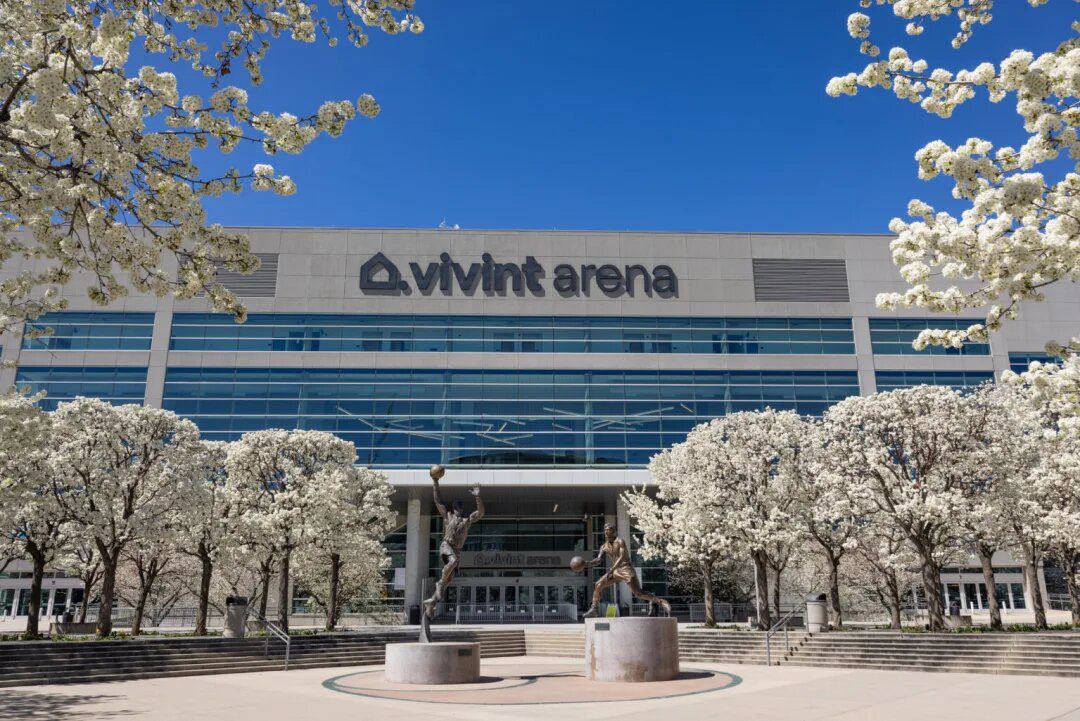When the Utah Jazz performed a major renovation on its arena in the mid-2010s, the NBA franchise basically did it from the top down. When the renovation work was unveiled, the huge rooftop solar array represented one of the biggest ones on an indoor venue.
According to Jim Olson, Jazz president, making it an initial showpiece of Vivint Arena’s renovation was purposeful because the solar panel project “reflects our desire to implement sustainable practices.” He added that “the overall building transformation will incorporate environmental and energy improvements, enhance the experience for our guests, and return the arena to a first-class venue.”
This extraordinary installation, featuring more than 2,700 solar panels, covered approximately 80,000 square feet, with the capability of generating almost 700 kilowatts of energy.
Among the pioneering American sports arenas capable of creating energy, Vivint can produce enough solar energy each year to power nearly 90 Jazz home games — more than two seasons of home games — or satisfy the annual electrical needs for a hundred houses. This clean energy, moreover, is equivalent to 1 million pounds of coal, providing a green energy benefit similar to planting 5,000 trips.
“The scale and environmental impact of the installation is remarkable as it reduces the toxic load on our air quality by the equivalent of 31.7 million miles of vehicular traffic,” explained Richard Hunt, CEO of Salt Lake City-based Hunt Electric. The company captained the design and installation of the solar array.
While this sun-powered energy boost is desirable anywhere, it is especially enticing in Salt Lake City, long known for having poor air quality. The Environmental Protection Agency, in fact, placed it at the top of its 2017 list of U.S. cities with the worst air quality levels. It should also be noted that Salt Lake City has ranked among the cleanest American cities when categories other than air pollution are included.
“[The solar panels are] not only contributing to the arena’s technological renovations, but it’s a clean energy decision that is going to make a huge environmental impact on a community deeply affected by the inversion,” David Bywater, Vivint CEO, said. “We hope it encourages other venues to choose clean, renewable energy as a major source of electrical power.”
Sustainability was part of the construction process in preparation for the solar array installation. A white polyvinyl chloride (PVC) membrane was laid across the roof’s surface to improve insulation and prevent leaks; however, this “EnergySmart” material also increased energy conservation.

Another environmental-related aspect of the arena’s $125 million renovation project included replacing the old lights with an LED lighting system. Besides reducing energy consumption, LEDs enhance the game experience for fans by delivering a full range of color effects.
The arena received another lighting upgrade before the 2022 season when Utah hosted the NBA All-Star game.
Brian Fitzpatrick of Revel Media group described the 70-million-pixel installation as “… truly one-of-a-kind and will be the first in any American stadium,” with this newer generation of energy-saving LEDs offering brilliant resolution.
The Utah Jazz’s sustainability campaign hasn’t focused solely on energy. In 2019, Vivint Arena concession stands stocked sippable lids instead of straws — although straws remained available upon request — and started using compostable, biodegradable cups. These switches decreased waste in the venue while raising recycling awareness among the team’s fans.
“These changes are part of a larger sustainability plan we are developing that focuses on providing food, beverage, and service wares in a safer and more responsible manner,” revealed Frank Zang, Jazz vice president of communications.

The venue’s green agenda continues to grow. In December 2021, the Jazz picked Salt Lake City-based LGCY Power as its exclusive solar provider. “Together, there will be more possibilities, resources, and opportunities to help the greater good,” said Olson.
In 2023, the Jazz announced that the team’s home would return to its original name, the Delta Center, in July. The Jazz’s deal to reconnect with Delta Airlines should not significantly affect the arena’s green programs — it might amplify them. In March 2023, Delta announced a comprehensive environmental strategy that targets achieving net-zero emissions by 2050.





